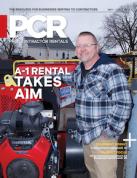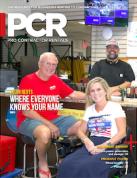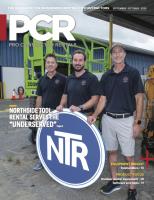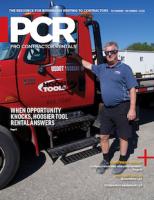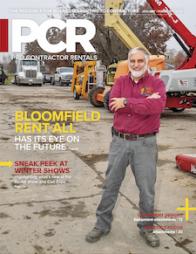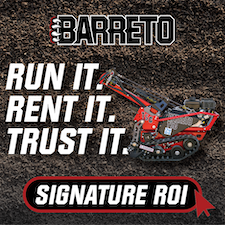Business Management -- Effective showroom strategies
Take fresh look at how customers interact with your showroom to boost incremental sales.
by Jill Becker
Effectively merchandising in your showroom can increase your revenue stream. One of the ways to add revenue is to make sure you are maximizing your add-on sales.
Here’s a list of 10 things you can start doing today to increase your add-on sales potential.
1. Know your customers
Although not a tactic for showcasing your accessories, this one helps determine what products you’ll need. Is one of your rental locations focused primarily on masons and another mostly catering to walk-ins? These two types of customers require a different product mix, because one will definitely not serve all.
Once you know the largest type of customer by location (or region), it’s pivotal at this stage to monitor sales trends. If you’re changing up your product mix, use historic sales data to determine what to stock, and when. The capital expense required to initially fill your sales inventory can be hefty, and further, any overflow inventory comes with the cost of warehouse space. Time your purchases to meet demand or seasonality. Not all items can be kept on a shelf indefinitely: obsoletion, degradation and recalls require routine checks of items on your show floor.
Finally, ask your customers. They can provide useful information on how you set up your showroom. Is the store easy to shop? Are you priced right? The customer will ultimately dictate what merchandise you should sell and at what price.
2. Think impulse buys
Similar to the strategies used by grocery stores and other large retail outlets, having a section near the check-out register to display those items your customer may not realize they need until they’re ready to check-out is a great advantage. Items like flashlights, knives, pliers, box cutters, screwdrivers or lanyards are some items that your customer may have forgotten they needed until they see it at the service desk or check-out register. Don’t forget things like water and snacks. Gas stations are finding these are primary revenue drivers during times when the margin on fuel is slim.
3. Show them what they need
Put all sales accessories out on display, grouped together by rental equipment type or job requirement. For example, fluids for floor care, stains, varnish, rags and buffer pads should be displayed together for those renting floor maintenance or installation equipment. This allows the consumer to visualize all the items they’ll need for their job and quickly assess what items they’re lacking.
4. Set up for success
Studies suggest that point-of-purchase (POP) displays effectively drive merchandise sales. How you display and highlight certain products depends on your customers’ needs and should be reviewed regularly to determine effectiveness.
Consider setting up the showroom so customers must walk through it to reach the counter. This gives maximum visibility to your products.
5. Would you like fries with that?
Set up your rental equipment software to prompt suggested items with each rental item. Have sales staff ask whether they need any additional items. Additionally, print suggested items on quotes or reservations as a gentle reminder of some items they may have overlooked when initially inquiring about their rental.
6. Promote for-sale equipment
If you have equipment for sale, promote it somewhere on your showroom floor. Keep sales inventory in front of your customers because they may be considering a purchase rather than rent for their next job.
7. Train, train, train
Give your staff the tools and training they need to make sure they optimize your sales strategy. They must be familiar with what merchandise to recommend for different jobs and equipment rentals. They should be aware of promotional items so they can promote them to customers as they interact with them.
8. Safety is no accident
Caution tape, goggles, hard hats, gloves…no matter the job type, safety equipment is always a requirement. Safety equipment crosses all disciplines, so it’s important to reach out to your total customer base. If safety equipment is displayed in a prominent area with signage explaining what is required where and when, can boost sale.
9. Customers will pay for convenience
Customers are already in your showroom, ready to rent or buy equipment. The items customers purchase are part impulse and part convenience buys. This means your pricing doesn’t have to compete with big-box stores. You can charge a premium for items based solely on convenience; at this point, customers are very likely not to be extremely sensitive to price.
10. Leverage reporting
Retail stores use heat maps for their stores to determine what areas see the highest amount of traffic and which areas or departments generate the most sales. Reports that generate these results can help ascertain whether your floorplan is effective, or whether you should be moving what should be your highest sellers to a more visible area.
If you have items that are hot sellers, are you selling them at a premium price? Analyzing sales reports and showroom statistics will help put your retail sales over the top. An ERP solution that offers a multitude of sales analysis reports that can help branch managers and purchasers determine the peaks and valleys of their inventory sales cycle and when to replenish stock.
--------
Jill Becker is the director of marketing for Wynne Systems.
This story originally appeared in the January-February 2021 issue of Pro Contractor Rentals magazine, ©2021 Urbain Communications LLC. All rights reserved.



